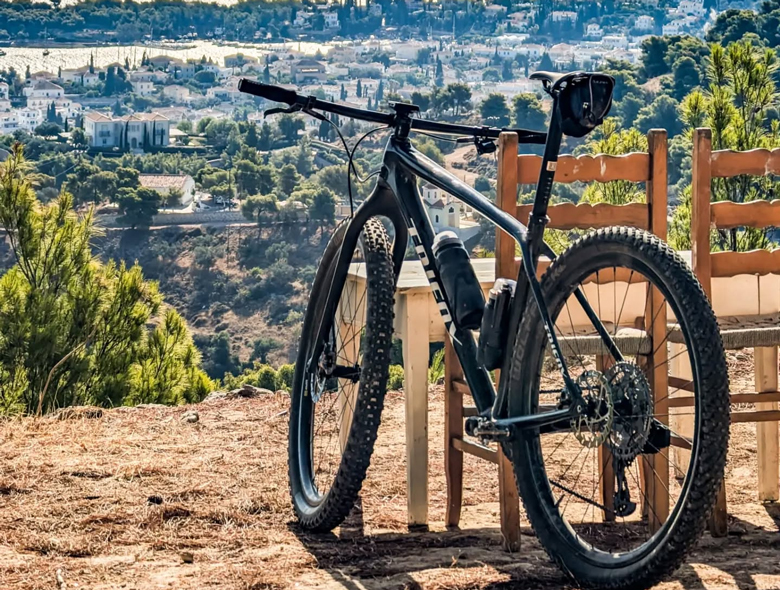
Mountain biking thrives on precision, and power meters have revolutionized training. But on rugged trails, every gram counts. The lightest power meters blend featherweight design with MTB-tough durability. Let's explore top options and how they pair with high-performance components Why Weight Matters Reducing rotational mass on wheels, cranks, or pedals improves acceleration and agility. A lightweight power meter minimizes drag, while a carbon frame like Trifoxbike’s Boost SDY20 (1,200g) amplifies efficiency. Together, they create a responsive ride ideal for technical climbs and sprints. Top Lightweight Power Meters 1. Sigeyi AXO Chainring Meter - Weight: +12g (vs. standard chainring). - Best For: Minimalists. Integrates seamlessly with most cranks. - Pair With: Trifoxbike’s SDY20 hardtail for a sub-10kg race-ready build. 2. 4iiii Precision 3.0+ - Weight: 15g (crank-arm). - Budget Pick: Affordable accuracy (±1.5%) for Shimano users. 3. Quarq DZero MTB - Weight: 135g (spider-based). - Pro Choice: Dual-sided data and SRAM compatibility. 4. Stages Carbon MTB - Weight: 140g. - Durability: Carbon construction for trail abuse. Why Frame Choice Matters A lightweight frame like Trifoxbike’s SDY20 Boost hardtail enhances power transfer, letting you capitalize on precise wattage data. Its carbon layup dampens trail chatter, while Boost spacing ensures stiffness for explosive efforts. Final Tips - Prioritize compatibility: Match power meters to your drivetrain and frame. - Balance weight and toughness: Trail demands reliability. - Upgrade smart: Pair a Sigeyi AXO or Stages meter with Trifoxbike’s SDY20 frame for a race-winning combo. Lightweight power meters and smart component choices let you train harder, climb faster, and ride longer—without sacrificing grams or performance.
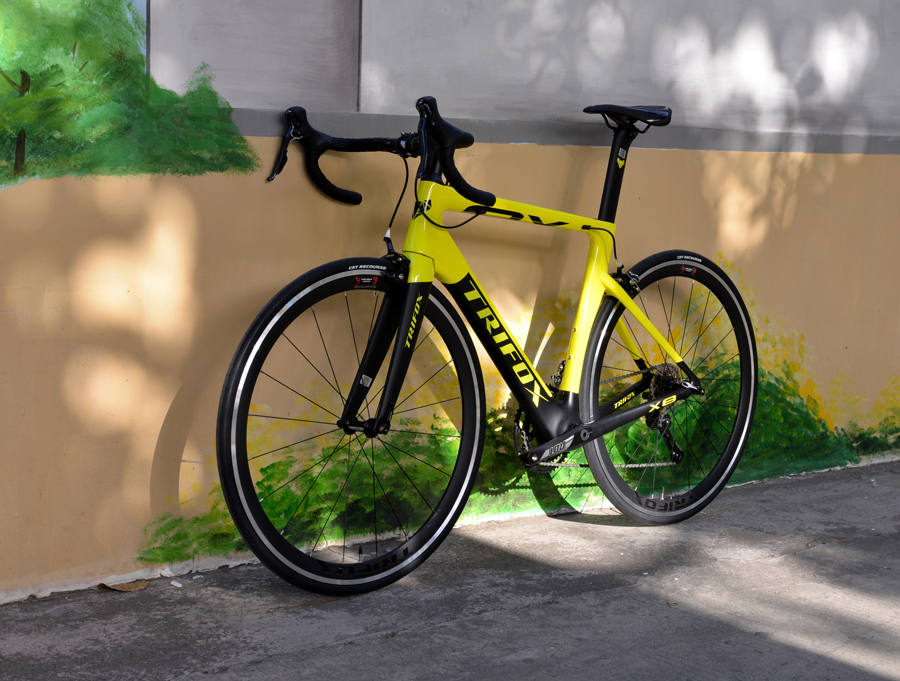
Road bikes, especially those with lightweight carbon frames like the Trifox Carbon Road Bike Frame, are precision machines built for speed and efficiency. But carbon fiber, while strong and responsive, requires careful handling to avoid damage. Whether you’re a daily commuter or a weekend racer, here’s how to protect your road bike and keep it performing like new for years. 1. Clean It Regularly Dirt, grime, and road salt aren’t just unsightly—they can corrode components and wear down surfaces. After every ride, wipe down the frame with a damp cloth, and use a gentle bike-specific cleaner for deeper cleans. Avoid high-pressure hoses, which can force water into bearings or crack carbon fiber if aimed directly at joints. 2. Store It Properly Carbon frames are tough but not indestructible. Store your bike in a cool, dry place away from direct sunlight (UV rays can degrade resin over time). Use a sturdy bike stand or wall mount to prevent accidental falls. If storing long-term, relieve tension on the chain and tires to reduce stress on components. 3. Avoid Impacts Carbon excels at absorbing road vibrations but is vulnerable to sharp impacts (e.g., potholes, curbs, or rough handling). Inspect your frame after crashes or hard hits for cracks, chips, or delamination. Even small damage can compromise structural integrity. For added protection, consider frame-safe accessories like silicone protectors on chainstay edges. 4. Check Bolts and Components Loose bolts can lead to misaligned parts or catastrophic failures. Use a torque wrench to ensure all bolts (stem, seatpost, derailleur hanger) are tightened to the manufacturer’s specifications. Over-tightening carbon parts can crush the material, so follow guidelines carefully. 5. Use Protective Gear Invest in frame protection film or neoprene sleeves for high-risk areas like the downtube, chainstays, and fork. These shields guard against scratches from gravel, chain slap, or transport mishaps. For Trifox carbon frames, which prioritize weight savings and stiffness, a little extra protection ensures aesthetics and performance stay intact. 6. Transport with Care Remove the wheels and use a padded bike bag when traveling. Never toss your bike into a car or rack without securing it—carbon frames can crack if jostled against hard surfaces. 7. Schedule Professional Inspections Even if your bike seems fine, have a mechanic inspect the frame and components annually. They’ll spot hidden issues like hairline cracks or bearing wear before they become costly repairs. Final Tip: Start with a Quality Frame A durable carbon frame, like Trifox’s models, is engineered to withstand the demands of road riding while offering crash replacement warranties for peace of mind. Pair it with smart maintenance habits, and your bike will reward you with miles of smooth, reliable performance.

Aero wheels are a hot topic in cycling, promising speed gains and efficiency for riders looking to shave seconds off their times. But do they actually live up to the hype, or are they just flashy accessories for your bike? Let’s break down the science, benefits, and trade-offs of aero wheels to help you decide if they’re worth the investment. The Science of Speed Aero wheels are designed to reduce aerodynamic drag, which is the largest force slowing you down at speeds above 15 mph (24 km/h). By using deeper rims (typically 40-90mm) and optimized profiles, these wheels slice through the air more efficiently than traditional box-section or shallow rims. Studies suggest that upgrading to aero wheels can save 15-30 watts of power at race speeds—equivalent to gaining a 1-2 mph boost without pedaling harder. For competitive cyclists, that’s often the difference between podium placement and the middle of the pack. But What About Real-World Riding? While the wind tunnel doesn't lie, real-world conditions add complexity. Aero wheels excel on flat roads, during solo breakaways, or in time trials where maintaining speed is critical. However, their benefits diminish on steep climbs (where weight matters more) or in gusty crosswinds, where deeper rims can feel twitchy. If you’re a weekend warrior or prioritize climbing over flat-out speed, the gains might not justify the cost. Alloy vs. Carbon Many riders assume aero wheels must be carbon, but alloy options like Trifox’s Alloy Road Wheels offer a compelling middle ground. These wheels blend durability, affordability, and a semi-aero profile to deliver noticeable performance improvements without the fragility or premium price tag of full-carbon setups. For riders who want a balance of aero efficiency and everyday reliability, alloy wheels are a smart choice—especially if you’re not chasing marginal gains in a race. The Verdict Aero wheels do make a difference—if speed is your priority. For racers, triathletes, or riders focused on flat-terrain performance, the aerodynamic edge is undeniable. However, for casual cyclists or those on a budget, the benefits may feel subtle compared to the cost. Consider your riding style, terrain, and goals before upgrading. And remember: No wheel can replace the power of consistent training! Ready to explore your options? Check out Trifox’s alloy road wheels for a practical, high-quality upgrade that won’t break the bank.

The question of how many gears a road bike “should” have doesn’t have a one-size-fits-all answer. From vintage 5-speed setups to modern 12-speed electronic groupsets, gear counts have evolved dramatically. The right number depends on your riding style, terrain, and budget. Let’s break down the factors to help you find your ideal setup. The Evolution of Speed Road bikes once topped out at 10 speeds, but today’s drivetrains offer up to 12 or even 13 cogs. More gears mean smaller jumps between ratios, letting you maintain optimal cadence (pedaling rhythm) on rolling terrain or long climbs. However, more isn’t always better—complexity, weight, and cost increase with each added cog. Key Considerations 1. Rider Needs: Competitive cyclists often prefer 11- or 12-speed systems for seamless shifting under load. Casual riders or commuters might prioritize simplicity with 8-10 speeds. 2. Terrain: Hilly routes demand wider gear ranges. A compact chainset paired with an 11-34T cassette (common in 11-speed setups) offers climbing ease without sacrificing top-end speed. 3. Maintenance: More gears mean tighter tolerances. A 9- or 10-speed drivetrain is easier to adjust and cheaper to replace. The Sweet Spot: 11-Speed Dominance For most road riders, 11-speed strikes a balance. It provides ample range (e.g., 11-30T or 11-34T cassettes) and smooth transitions between gears. Brands like Shimano 105, SRAM Rival, and Campagnolo Centaur offer reliable mid-tier 11-speed groupsets that blend performance and affordability. When Less is More Beginners or budget-conscious riders might opt for 8-10 speeds. These systems are robust, cost-effective, and sufficient for flat to moderate terrain. Plus, wider gear spacing can reduce shifting frequency, which is less mentally taxing on long rides. Cutting-Edge: 12-Speed and Beyond High-end 12-speed groupsets (Shimano Dura-Ace, SRAM Red) cater to racers and tech enthusiasts. Hyper-precise shifting and expanded gear ranges maximize efficiency, but they come at a premium price—and not all frames/wheels are compatible. Trifox's Approach: Versatility Meets Value Trifox road bikes, offer customizable builds to match your gear preferences. Whether you prioritize the crispness of 11-speed Shimano or the simplicity of a 9-speed commuter setup, their ultralight carbon frames adapt to your needs without compromising durability. Final Shift Your ideal gear count hinges on where and how you ride. More speeds deliver precision, but simplicity has its perks. Test different setups if possible, and remember: the best drivetrain is the one that keeps you pedaling—and smiling—mile after mile.

When it comes to mountain biking, finding the right balance between cost and performance can feel like a never-ending quest. Enter the 29er alloy hardtail frame—a design that promises the ruggedness needed for aggressive trails without breaking the bank. But does it live up to the hype? THE CASE FOR ALLOY: AFFORDABILITY MEETS PERFORMANCE Carbon fiber often steals the spotlight for its featherweight appeal, but alloy frames like the MK7 offer a compelling alternative. Aluminum provides a robust foundation at a fraction of the cost, making it ideal for riders who prioritize value. The MK7's ultralight construction shaves weight without compromising strength, bridging the gap between budget-friendly and high-performance. For beginners or seasoned riders watching their wallets, alloy delivers resilience where carbon might falter—think rock strikes, crashes, or rough trail abuse. TRAIL-READY TOUGHNESS: BUILT TO LAST Durability is where alloy truly shines. The MK7’s hydroformed tubing reinforces critical stress points, ensuring the frame withstands repeated punishment from roots, drops, and technical climbs. Pair this with the modern 148mm Boost rear spacing, which increases wheel stiffness and compatibility with wider hubs, and you’ve got a setup that combats flex during hard cornering and accelerates efficiently. This isn’t a frame that coddles; it’s built to push limits, making it a reliable partner for everything from flowy singletrack to gnarly descents. 29ER WHEELS: THE TRAIL-SMOOTHING ADVANTAGE The 29-inch wheels paired with this hardtail design are a game-changer. Their larger diameter rolls over obstacles with ease, maintaining momentum on climbs and reducing fatigue over long rides. While hardtails lack rear suspension, the MK7’s rigid rear triangle ensures direct power transfer, letting you tackle climbs with urgency. The 29er’s stability also complements the frame’s durability, creating a bike that feels planted and predictable when the trail gets rowdy. HARDTAIL SIMPLICITY: LESS MAINTENANCE, MORE RIDING Hardtails eliminate the complexity (and cost) of rear suspension, offering a lighter, more responsive ride. The MK7 leans into this ethos, with a clean design that’s easier to maintain and repair. Fewer moving parts mean fewer headaches—perfect for riders who want to spend less time tuning and more time riding. VERDICT: THE BEST OF BOTH WORLDS? So, is a 29er alloy hardtail frame the perfect blend of affordability and durability? For most riders, the answer leans yes. The Trifox MK7 exemplifies this balance, offering a lightweight yet tough platform that thrives on diverse terrain. It's a smart choice for those seeking a capable, low-maintenance bike that won't empty their wallet.
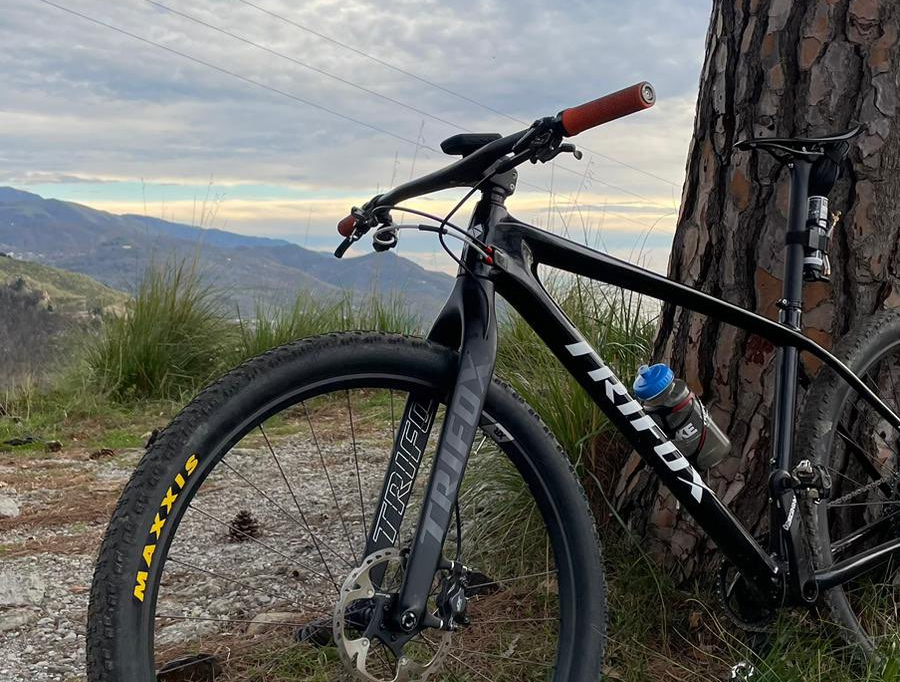
In the world of mountain biking, agility reigns supreme. Whether carving through singletrack or tackling technical descents, responsiveness and control define your ride. The secret to unlocking next-level off-road performance lies in two innovations: an ultralight carbon MTB frame and a Boost fork. Together, they create a synergy that elevates speed, precision, and confidence on any trail. Ultralight Carbon Frame: The Backbone of Speed Carbon fiber's magic lies in its strength-to-weight ratio. Trifox’s SDY20 frame exemplifies this, shedding grams without sacrificing durability. A lighter bike accelerates faster, climbs easier, and flicks through tight turns effortlessly. Carbon’s natural vibration damping also enhances comfort, reducing fatigue on long rides. But the real win is stiffness—optimal torsional rigidity ensures every watt of power translates to forward motion, while compliant seatstays absorb trail chatter for better traction. Boost Fork: Precision Meets Stability The Boost standard (110mm front axle spacing) isn’t just a buzzword—it’s a game-changer. Wider hub spacing increases wheel stiffness, preventing flex during hard cornering or rock strikes. This means sharper steering response and unwavering control in loose terrain. Paired with a lightweight carbon frame, the Boost fork ensures your front wheel tracks true, boosting confidence on steep descents and technical climbs. The Dynamic Duo Combine the SDY20's featherlight frame with a Boost fork, and agility reaches new heights. The frame's nimble character complements the fork’s stability, creating a bike that’s both quick and composed. Tight switchbacks? Effortless. Rocky descents? Unshakable. This pairing reduces rider fatigue, letting you push harder for longer. For riders seeking an edge, Trifox’s SDY20 merges cutting-edge materials and smart engineering. It's not just about weight or stiffness—it’s how these elements harmonize to redefine off-road agility.

Mountain biking thrives on adrenaline, but as trails get gnarlier, your hardtail might struggle. So, when is it time to switch to a full suspension bike? 1. Your Terrain Demands It If you’re tackling rocky descents, root-covered paths, or technical drops, a full suspension bike absorbs shocks better, keeping you in control. TrifoxBike’s designs, like the Trifox Full Suspension MTB, feature optimized rear travel to smooth out rough trails, reducing fatigue and improving traction. 2. Your Riding Style Gets Aggressive Downhill shredders, jump enthusiasts, and enduro racers benefit from dual suspension. The added stability at high speeds and landings protects your body and bike. TrifoxBike’s frames balance lightweight durability with responsive suspension, ideal for pushing limits. 3. You Ride Frequently Regular riders logging long hours need comfort. Full suspension reduces joint strain, letting you ride longer. TrifoxBike integrates ergonomic designs without sacrificing efficiency, making their bikes a smart choice for daily adventurers. 4. Your Skills Outgrow Your Bike Advanced riders tackling steeper lines or faster corners need bikes that match their progression. Full suspension offers confidence to tackle technical features. TrifoxBike’s models support skill growth with precision handling and adjustable setups. 5. Budget Allows for Investment While pricier than hardtails, TrifoxBike delivers high-value builds with premium components like air shocks and durable pivots. If your riding justifies the cost, it’s a worthy upgrade. 6. You Prioritize Traction Wet, loose, or uneven terrain demands grip. Full suspension maintains tire contact, enhancing control. Pair this with TrifoxBike’s grippy tire compatibility, and you’ve got a trail-eating machine. 7. Maintenance Doesn’t Intimidate You Full suspension requires more upkeep, but TrifoxBike’s reliable seals and accessible pivot points simplify care, ensuring longevity. Upgrade if your trails, style, or ambition demand more. TrifoxBike’s full suspension range blends performance and value, ready to elevate your ride.
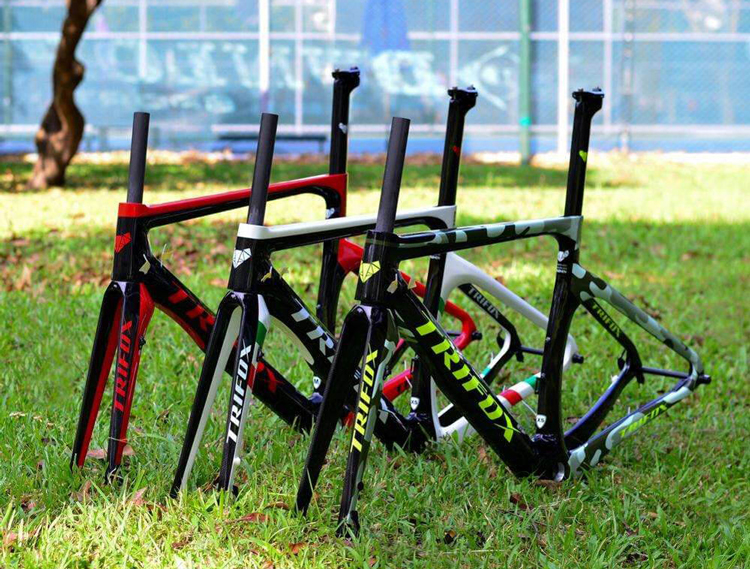
The cycling world is evolving, and disc brakes are now the gold standard for road bikes. Once reserved for mountain bikes, this technology has revolutionized road cycling, offering unparalleled performance and safety. 1. All-Weather Reliability Disc brakes excel in diverse conditions. Unlike rim brakes, which lose grip in rain or mud, disc rotors provide consistent stopping power. This reliability boosts confidence on wet descents or gritty roads, making them a must-have for commuters and racers alike. 2. Wider Tire Compatibility Modern road bikes prioritize comfort and speed, embracing wider tires (28mm+). Disc brakes eliminate rim wear, allowing frames like Trifox’s carbon models to accommodate larger tires without compromising clearance. The result? A smoother ride and improved traction. 3. Precision Control Disc brakes offer superior modulation, letting riders fine-tune braking force. This precision prevents skidding and reduces fatigue on long rides, enhancing safety during technical maneuvers or crowded group rides. 4. Aerodynamic Advantage Disc-specific frames, such as Trifox’s carbon road bike frames, streamline brake integration. Without rim calipers, designers optimize tube shapes for aerodynamics, cutting through wind with minimal drag—ideal for speed seekers. 5. Long-Term Durability Disc systems reduce rim stress, prolonging wheel life. Paired with robust carbon frames, cyclists enjoy lighter, sturdier builds that withstand rigorous use, from climbs to sprints. Disc brakes aren't a trend—they’re the future. As cyclists demand versatility and performance, brands like Trifox Bike deliver with disc-ready carbon frames that merge innovation and agility. Ready to upgrade? Explore Trifox’s cutting-edge options here and join the revolution.
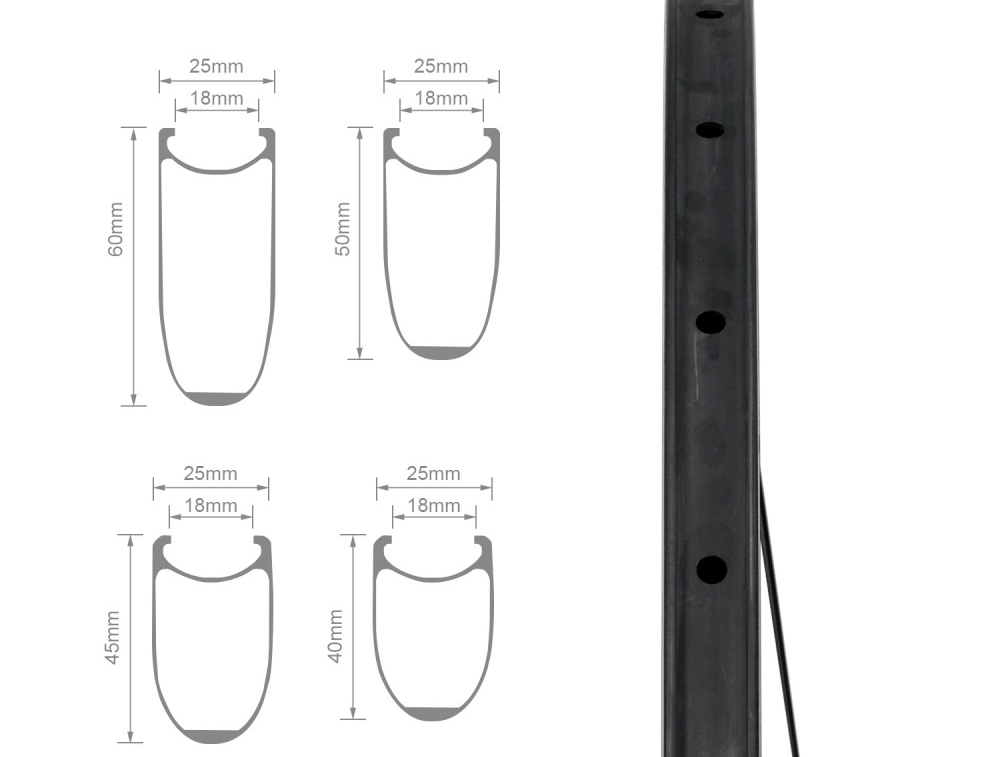
Upgrading from traditional V-brakes to disc brakes is a common question among cyclists seeking better stopping power and control. The answer? Yes, but it depends on your bike’s compatibility and budget. Let’s break down the process, costs, and whether it’s worth the effort. Key Considerations 1. Frame & Fork Compatibility: Disc brakes require mounts (IS or Post Mount) on your frame and fork. If your bike lacks these, conversion isn’t feasible without costly adapters or replacements. 2. Wheel Compatibility: Disc brakes need hubs with rotor mounts. Your current wheels may not support this, necessitating a new wheelset. 3. Brake Levers: V-brakes use long-pull levers, while mechanical disc brakes (cable-actuated) are compatible. Hydraulic discs require dedicated levers, often meaning a new groupset. 4. Cost: Expect to spend 200 200–500+ for quality disc brakes, rotors, wheels, and labor if DIY isn’t an option. Steps to Convert 1. Check Compatibility: Inspect your frame, fork, and wheels for disc mounts. No mounts? Consider a new fork/wheelset or stick with V-brakes. 2. Choose Brake Type: Mechanical Discs: Affordable, easier to install, and compatible with existing levers. Hydraulic Discs: Superior performance but require new levers and bleeding tools. 3. Upgrade Wheels: Invest in disc-ready hubs. Trifox’s lightweight carbon wheels, for example, offer durability and compatibility for smooth upgrades. 4. Install Brakes & Rotors: Attach calipers, secure rotors, and adjust pad alignment. Test thoroughly before hitting trails! When Is It Worth It? - Performance Needs: Disc brakes excel in wet/muddy conditions and on steep descents. If your rides demand reliability, upgrade. - Future-Proofing: Converting lets you use modern components if you plan to keep the bike long-term. - Frame Quality: High-end frames justify the cost; cheaper bikes may not. Alternatives - Hybrid Systems: Semi-hydraulic (e.g., TRP HY/RD) combines cable levers with hydraulic calipers for a middle-ground solution. - Optimize V-Brakes: High-quality pads (e.g., Kool-Stop) and compressionless housing can improve existing V-brake performance. Swapping V-brakes to discs is possible but not always practical. If your frame supports it and you crave all-weather reliability, the upgrade is transformative. For casual riders or incompatible bikes, stick with tuned V-brakes or consider a new disc-equipped bike. Either way, prioritize safety and compatibility—because confident braking is the foundation of every great ride.

















